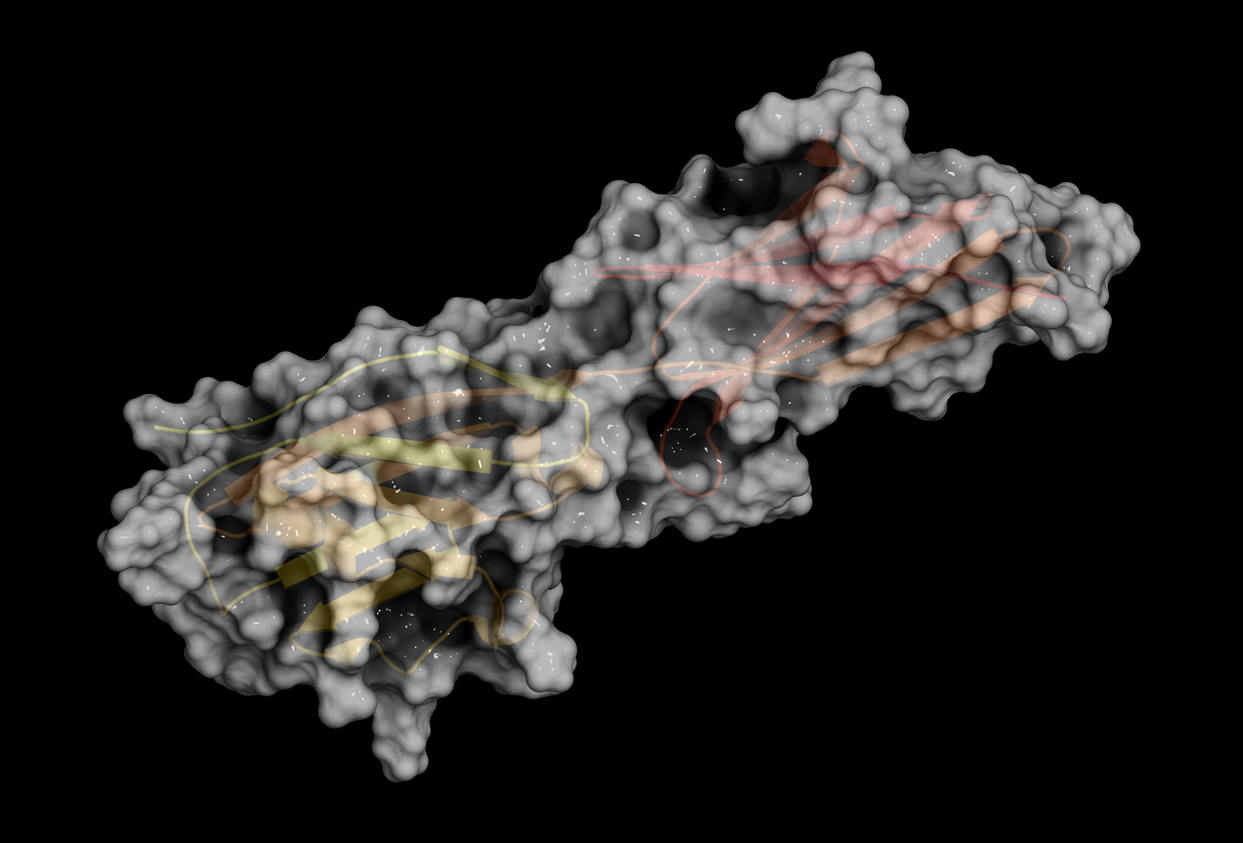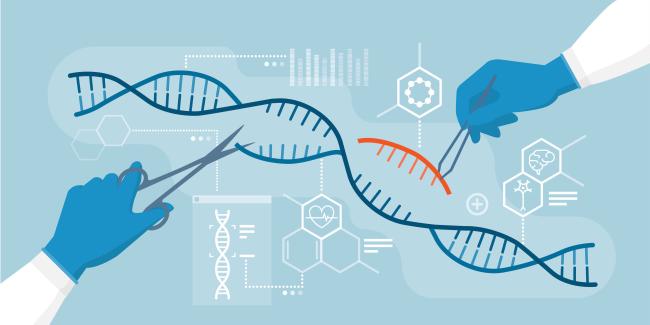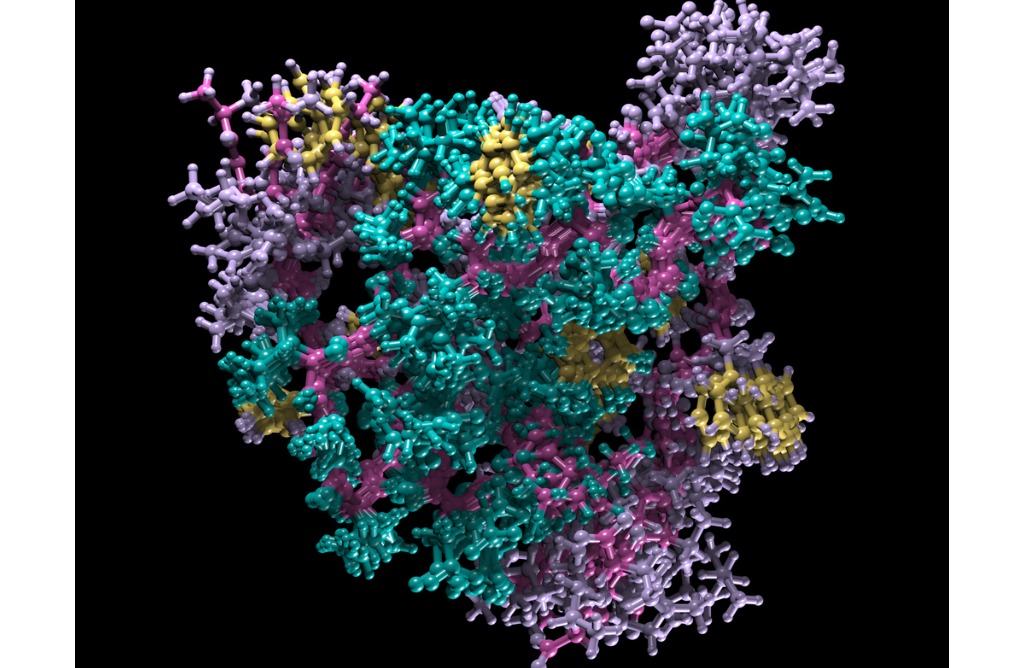This Year’s Top Moments In Biotech
22 December 2022 | Thursday | Opinion | By Brought to you by Twist BioScience

Image Source : Public Domain
In many ways, synthetic biology is the unseen tide that raises all ships. The tools and techniques that come from this fast-growing field help to drive advancements in genetics, they open doors to novel therapeutic modalities, and they make it possible to engineer better, more sustainable sources of food. Yet, as a nascent and versatile field, the value of synthetic biology in the fields of genomics, industrial biotechnology, and therapeutic development—to name a few—is easy to overlook if not celebrated. And this year is certainly worth celebrating. Below we explore 8 of this year's most exciting advances involving synthetic biology and how they forecast a rising tide of scientific progress in 2023.
Immuno-oncology Finds Solid Ground

This year has seen several new additions to the immuno-oncology space. In January, the first ever bispecific T-cell receptor (TCR) therapy was approved by the FDA for use in patients with unresectable or metastatic uveal melanoma. In contrast to cell therapies, Immunocore’s tebentafusp—trade name Kimmtrak—does not involve engineering a patient’s cells. Instead, Kimmtrak is a soluble T cell receptor (TCR) that binds to a melanoma-specific HLA-peptide complex. Once bound, a CD3 domain on the TCR recruits cytotoxic T cells (the cells in our bodies that kill invaders and bad actors) and elicits destruction of the cancerous cell.
Previous results showed that Kimmtrak could improve patient one-year overall survival rates by nearly 50%. Not only is this the sole approved therapeutic for metastatic uveal melanoma, but Kimmtrak is now the first immunotherapeutic to be approved for solid tumors.
Whether it’s a chimeric antigen receptor (CAR), an engineered TCR, or a novel soluble TCR like Kimmtrak, developing immunotherapeutics is an arduous task that requires extensive design, build, test, and learn cycles. Large quantities of synthetic DNA are needed to build peptide screening libraries and, ultimately, combinatorial domain libraries. The approval of Kimmtrak and multiple CAR-T cell therapies this year shows the growing importance of cell therapy, which can be supported by the maturing and expanding utility of synthetic biology.
Checkpoint Inhibitors Welcome Another To Their Ranks

Tumors mold their environment in myriad ways, one of which is to release cytokines that trigger immune checkpoints and suppress immune cell activity, thus allowing unopposed malignant growth. Considerable effort has been dedicated to the development of checkpoint inhibitors that allow immune cells to shirk the restraints of the tumor microenvironment and begin attacking tumor cells.
At the beginning of 2022, checkpoint inhibitors had been developed against three targets: PD-1, PD-1L, and CTLA-4. While effective for some patients, the rapid pace of tumor evolution can lead to resistance, immune evasion, and eventual tumor progression. One way to decrease the odds of resistance is to direct checkpoint inhibitors against multiple targets.
In March of this year, the FDA approved the use of relatlimab—a novel checkpoint inhibitor that targets the LAG-3 protein—in combination with the PD-1 targeting nivolumab. Together, these two checkpoint inhibitors open the door for more successful treatment of patients with unresectable or metastatic melanoma. This is significant considering the challenges of developing immunotherapeutic checkpoint inhibitors, a process that requires careful, arduous antibody engineering.
To this end, synthetic DNA has proven invaluable for antibody discovery and engineering. With platforms like Twist’s, researchers can design and test large antibody variant libraries in parallel, greatly expediting the discovery process. From there, rationally designed antibody libraries can be designed to uncover optimal antibody sequences.
In the coming years, we’re likely to see many more checkpoint inhibitors that come about thanks to early synthetic DNA screens. In highlighting this point, just this year, Astellas entered into a research, exclusive option and license agreement with Twist to identify and optimize proprietary Twist antagonist antibodies targeting an undisclosed checkpoint inhibitor.
Oncology Gains A Microbial Supply Chain

In August of this year, a team of researchers led by UC Berkeley’s Jay Keasling reported the successful production of Vinblastine in yeast. As one of the most used anticancer agents in the world, vinblastine is in high demand. Yet, over the past decade, several shortages have forced physicians to ration the medicine in what some described as a “nightmare scenario”. While shortages are driven by many intersecting factors, the economics of production certainly play a role.
Vinblastine and the related chemotherapeutic Vincristine are naturally produced in the Madagascar periwinkle flower through a complex process involving more than 30 enzymatic steps. De novo synthesis is, at present, impossible. Instead, researchers extract precursor compounds from the flower’s leaves and use basic chemical synthesis methods to produce the anticancer agents in large-quantities. However, producing just 1 gram of vinblastine or vincristine requires either 500 or 2,000 kilograms of dried periwinkle leaves, respectively.
To improve production, Keasling and his team engineered the yeast genome to produce the critical precursors, describing this system as a microbial supply chain. This process included assembling and expressing 34 heterologous genes from plants, as well as making deletions, knock-downs, and overexpression of 10 yeast genes. Importantly, vinblastine belongs to a class of drugs known as monoterpenoid indole alkaloids (MIAs) which encompasses more than 3,000 different compounds. Having solved the synthesis of vinblastine, it is expected that minor modifications to this system will enable production of many of these other compounds as well.
Gene Editing Expands In Scope

The past decade has seen explosive growth in gene editing technology, driven largely by CRISPR/Cas9. This year was no different. There have been many big developments, and it would be too much to list them all. But among this year's gene editing achievements, three moments stood out to us.
In January of this year, researchers at Massachusetts Institute of Technology and Harvard University published a preprint describing a system known as Reprogrammable adenosine deaminases acting on RNA, or RADAR. The system works by designing a RADAR molecule containing both a “guide” and a “payload”. The payload is a transcript for a specific gene, whereas the guide is complementary to a specific RNA transcript save for one section that forms a bubble upon hybridization. This section can be designed to have an adenosine situated within a critical stop codon. When the bubble forms, the deaminase come along and convert the adenosine into a cytosine, nullifying the stop codon. With the stop codon deactivated, the payload is free to be expressed.
This exquisite system enables gated gene expression, such that payload genes are only expressed in cells that are also expressing the target RNA. Such a system could then be used to ensure that specific genes—such as cell killing caspases, hyperactive transcription factors, or fluorescent proteins—are only expressed under specific conditions. It is feasible then that this technology could be applied to cell and gene therapies as well as basic molecular biology research.
Another noteworthy paper came in July when a multi-institutional team of researchers described the use of direct capture perturb-seq to perform genome wide, single-cell CRISPR screening.
CRISPR perturbation can be used to study transcriptional changes and gain critical insight into gene functions, however this technology has been challenging to use in single-cell studies, partly because it had been difficult to link individual perturbations to their corresponding transcriptomic profiles. In an earlier study, Replogle et al., demonstrated an elegant system that enables the direct capture and sequencing of guide RNAs during RNA-seq.
This system opened the door for single-cell CRISPR screening on a massive scale, a possibility that came to fruition with this year’s paper. In it, Replogle et al., demonstrate a genome-wide CRISPR screen with single-cell RNA-seq resolution. Such a scale had previously not been possible.
An additional CRISPR advancement came in November when researchers from a combination of private and academic institutions described a new gene editing technique known as PASTE (programmable addition via site-specific targeting elements). The system combines the site-specific cutting of CRISPR nickases with the DNA integrating functions of serine integrases. This combination allows for large segments of DNA—on the order of many thousands of base pairs—to be precisely inserted into genomic DNA.
Practical applications for PASTE are many as it now allows for the potential insertion of genes with high precision. The authors demonstrate how the technology may be beneficial in gene therapies. Among many potential diseases that could benefit, the authors expressed hope that it may one day be used to replace the dysfunctional CFTR gene that drives cystic fibrosis.
Sequencing Instrument Wars Ignite, Again

In the 1990s the biotech world was dominated by sequencing wars wherein private and governmental groups raced to sequence the human genome. While the completion of this project was the goal, the true race was an arms race as developers competed to create the sequencing technologies that could read DNA ever faster, with ever more accuracy, and comprehensive coverage of the genome. It was a tall order, but out of these wars came the next generation sequencing machines we know today.
Though it has been quiet for years, this year seemed to mark a new era in the sequencing wars as Illumina announced the release of a new line of sequencing machines, ones intended to reduce the cost of whole genome sequencing to just $200. This is a substantial drop in cost from the nearly $100 million it cost per genome two decades ago. Such a drop in costs could mean expanded access to genetic data—both DNA and RNA—across many business sectors.
In clinical settings, access to cheaper sequencing data can help drive preventative screening initiatives, more comprehensive tumor profiling, and better matching of patients with clinical trials. In the agricultural biotechnology sector, affordable sequencing may make it easier to assess and manipulate genetic diversity among crops, as well as enable more efficient approaches to trait selection and propagation.
From a research perspective, improved access to genomic data is likely to accelerate the rise of multi-omics sequencing wherein genomic and transcriptomic data are considered in parallel, ultimately enabling a more comprehensive picture of life’s central dogma.
However, Illumina’s short-read technology has limitations that make it difficult to use for various applications, including the study of highly repetitive genomic regions, RNA splicing diversity, and the study of genomes for which there is no reference. To support these applications, Illumina announced the upcoming release of long-read sequencing machines that enable contiguous sequencing up to 10,000 bases.
Such a development hasn’t gone unchallenged. Pacbio has been an industry leader in long-read sequencing and, this year, announced the release of a new long-read sequencing machine that promises to deliver a whole genome sequence for just $1000. Longer read lengths relieve some of the challenges that come with data alignment, making it particularly valuable for de novo genome assembly and the study of structural variation at both the genomic and transcriptomic levels.
And, just as Illumina entered the long-read space, Pacbio is entering the short-read space with the launch of a benchtop sequencer that utilizes short-read methods.
The sequencing wars are heating up at a time when sequencing technology is rapidly expanding in its application, thanks in large part to improvements in library preparation and target capture technologies. With better library prep, genetic information can be gleaned from challenging sample types, such as soil or paraffin-embedded, formalin-fixed tissue blocks. Precise and uniformly synthesized target capture panels can then be used to ensure that trace amounts of target DNA are adequately represented in sequencing data without the need to invest exorbitant amounts of resources.
Thus, the end of the sequencing war detente is part of a larger industry trend towards improved efficiency.
Next Generation Sequencing Takes Aim at Recurrent Cancer

This year saw a marked increase in minimal residual disease (MRD) testing. Generally, this is an approach to tumor monitoring wherein next generation technology is used to detect the presence of circulating tumor DNA (ctDNA) in liquid biopsies from patients. Not only is ctDNA released from individual cells, but it can carry with it telling mutations and epigenetic signatures—making it a potentially sensitive and information rich biomarker.
Accessing this biomarker is not easy, though. The abundance of cell-free DNA (cfDNA) in liquid biopsy samples can easily obscure ctDNA’s presence. Similarly, germline mutations that are associated with cancer can lead to false positive results as mutation carrying cfDNA is mistaken for ctDNA.
To accurately and sensitively detect ctDNA, researchers need the ability to cut through the noise and specifically search for sequences that are known to be present in the tumor. To this end, the oncology field was abuzz this year with talk of tumor-informed MRD panels.
With data from whole exome or whole genome sequencing of tumor biopsies, custom MRD panels can be designed that selectively target tumor-specific patterns. These target capture panels can thus enrich liquid biopsy samples for ctDNA and allow for much more efficient and sensitive ctDNA detection. Given the ease of liquid biopsy collection, this gain in sensitivity means that tumor-informed capture panels can be used to help identify recurrent tumors well before standard-of-care methods (such as radiological imaging).
This year numerous papers were published describing the potential utility of ctDNA as a biomarker and a number of clinical trials are ongoing. Fueling this moment, Twist launched its own MRD solution this year which utilizes highly parallel, precise, and uniform DNA synthesis to rapidly build custom MRD panels at low cost. This means that the value of custom MRD panels is no longer confined to niche projects, but is becoming broadly available.
Proteins Enter The Sequencing Spotlight

The proteomics space is primed for a revolutionary decade. In both health and disease, proteins undergo a wide range of modifications that can have cascading effects within a cell. Detailing the many changes that occur in a protein—such as expression level, mutations in amino acid sequence, and post-translational modifications—can help shed critical light on the dynamics of basic cell biology, disease pathogenesis, and may even help to identify drug targets. However, doing so has been exceedingly difficult.
While a cell's proteome can be inferred from genomic and transcriptomic data, limitations of sequencing technologies obscure the variability of the human proteome, not least of which being post-translational modifications. As such, researchers have largely turned to mass spectrometry (mass spec) to study protein structure and composition. Though valuable, mass spec is low in throughput, requires deep expertise, and considerable resources to operate, all of which limit the pace of proteomics research.
For these reasons, there has been a push to develop higher throughput technologies that allow for both broader access to proteomics and finer resolution data. This year saw significant progress towards this goal.
In January, SEER announced the launch of a next-generation proteomics research platform which aims to improve the throughput of mass spec by simplifying the sample preparation. Magnetic nanoparticles designed against specific proteins function like target enrichment panels, capturing desired proteins for subsequent analysis on mass spec machines.
Moving beyond mass spec, in October of this year, a team of 70+ researchers published a report in Science describing the development of protein sequencing technology that leverages many of the same principles as genomic Next Generation Sequencing (NGS) technology.
Using directed evolution, the team engineered multiple terminal amino acid binding probes that are bound by a fluorophore and are capable of binding to specific amino acids at the termini of peptides. By measuring the fluorphore’s intensity and duration of fluorescence, the terminal amino acid can be inferred. Through sequential rounds of measurement and enzymatic degradation, amino acid sequences up to 20 nucleotides long can be described—a length the authors say is sufficient to identify many proteins.
While not yet perfect, the technology is very reminiscent of the early DNA sequencers in its potential, meaning this may be the spark that leads to an explosion in protein sequencing technology over the next decade. For this to happen, though, the tools of synthetic biology will be critical, namely those related to protein engineering and directed evolution.
To this end, the use of artificial intelligence and machine learning may be an accelerant. Programs like Alphafold2 can help researchers rationally model protein structures in order to predict how modifications may affect protein function. Libraries of combinatorial variants based on these models can then be synthesized and used for directed evolution, ultimately enabling refinement of the candidate proteins for therapeutic or sequencing purposes.
The White House Invests In The Bioeconomy

The “bioeconomy” is the general concept that biotechnological innovation can lead to economic benefits across many sectors. For example, advancements in biotechnology that enable better disease modeling are likely to improve drug development productivity, which in turn can both accelerate the development of better drugs for patients as well as decrease the costs of drug development.
The bioeconomy is a concept that many in this field are familiar with, but this year the bioeconomy found itself in the White House. In September, the White House issued an executive order on “Advancing Biotechnology and Biomanufacturing Innovation for a Sustainable, Safe, and Secure American Bioeconomy.”
Among its stipulations, the executive order aims to:
- Increase federal investment in key research and development areas of biotechnology and biomanufacturing;
- Improve and expand the capacity and processes of domestic biomanufacturing;
- Build a diverse, skilled biotechnology workforce through training and other forms of support;
- Clarify and streamline regulations to create a smoother path to market for cell and gene therapies.
After releasing this executive order, the White House called on industry leaders, including Twist, to call attention to segments of the bioeconomy that can help translate research and development efforts into breakthrough technologies, both in the near and long term.
This executive order is a significant moment for biotechnology as it focuses the nation’s resources on advancing research and development. As synthetic biology is proving to be critical to advancement and development across scientific disciplines, from genetics to agriculture, it is clear that investment in biotechnology will necessarily mean investing in synthetic biology.
Twist participated in this discussion to help identify and weigh in on where investments can be made in the bioeconomy, including early market support for emerging capabilities, maturing technologies and semiconductor integrations.
It is hard to say what the next year will hold. But the considerable progress made in synthetic biology over this past year gives us confidence that 2023 will be an exciting and productive year.
Most Read
- The New AI Gold Rush: Western Pharma’s Billion-Dollar Bet on Chinese Biotech
- Top 25 Biotech & Biopharma Leaders in Sustainable Innovation, 2025
- China’s Biopharma Dealmaking Surges in H1 2025, Driven by Record Licensing and Oncology Focus
- Chikungunya in China: How a “Forgotten” Arbovirus Found the Perfect Storm
- How Innovation Gaps in Biopharma Raise New Safety Concerns
- Smart Implants and the Future of Musculoskeletal Injury Treatment
- How Ethical Gaps in Psychiatry Could Undermine Biopharma Progress
- The Evolving Landscape of Women’s Health Innovation in the Asia-Pacific
- Using NLP-Driven Decision Support in Emergency Health Assistance
- Taiwan Steps Into the Global Spotlight With a New Cancer Therapy
- The Role of Unique Device Identification (UDI) in Tracing Medical Device Safety
- The Importance of a Patient’s Mental Health During Clinical Trials
Bio Jobs
- The State of Biotech and Life Science Jobs in Asia Pacific – 2025
- Avantor’s New CEO Ligner Aims to Unlock Global Potential and Deliver Shareholder Value
- AstraZeneca Commits $50 Billion to U.S. Expansion by 2030 in Biggest-Ever Global Investment
- Thermo Fisher, SAMRC, and South Africa’s Department of Science and Innovation Launch CATIR to Nurture Next-Gen Scientists
- Cube Biotech Appoints Former Sartorius CEO Dr. Joachim Kreuzburg to Board of Directors
- FDA’s AI Transition Marks a Turning Point in Drug Review: Industry Faces Pressure to Adapt Amid 20% Workforce Cut
- WuXi XDC Completes Mechanical Build of Singapore Bioconjugate Manufacturing Hub
News
Editor Picks











